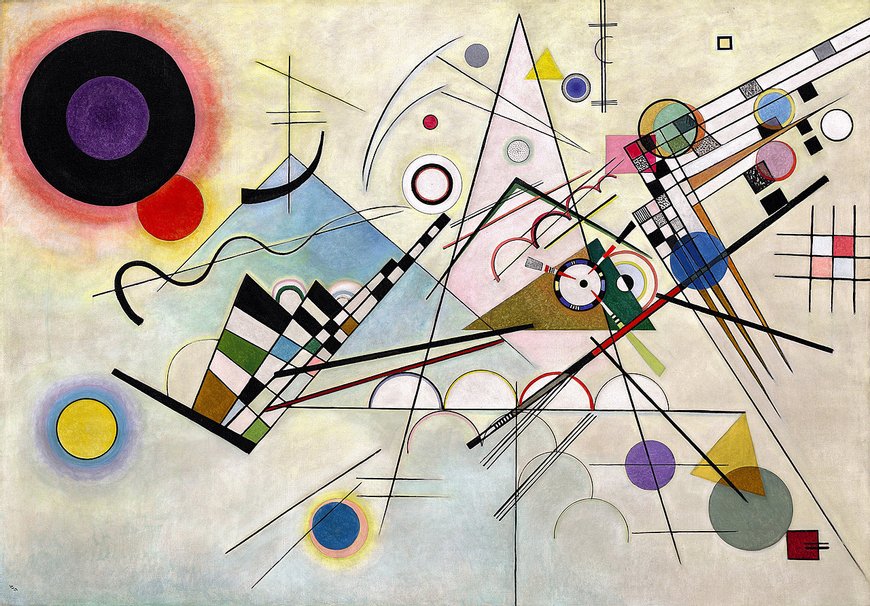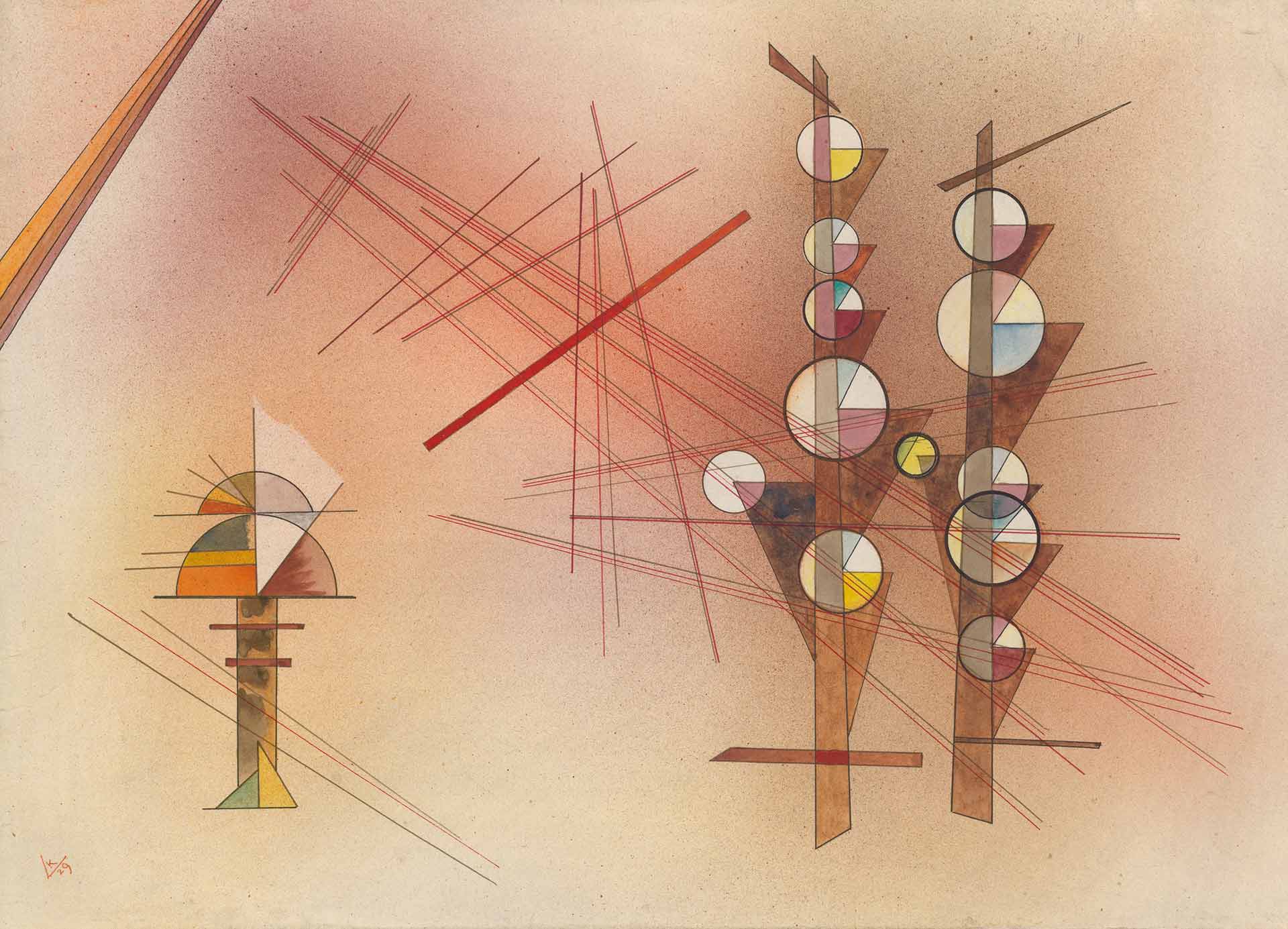Cosmic Realms: Russia to the Bauhaus
Gallery 307
In 1914, after the outbreak of World War I, Vasily Kandinsky was forced to leave Germany due to his Russian nationality. He eventually settled in his native Moscow, where the avant-garde sought to establish a universal aesthetic language through geometric forms. Having ended his generative relationships with Gabriele Münter and other German associates, Kandinsky observed his Russian contemporaries’ experiments but found his artistic pursuit of spirituality did not align with their detached, production-based approach.
Kandinsky returned with his wife, Nina, to Germany and in 1922 began teaching at the Bauhaus, the state-sponsored school of art and applied design founded by the architect Walter Gropius. Kandinsky discovered there an environment sympathetic to his belief in art’s ability to transform self and society. He further investigated the correspondence between colors and forms and their psychological and spiritual effects.
Geometric shapes came to dominate Kandinsky’s pictorial vocabulary, and he used overlapping, flat planes. This change was due, in part, to the ongoing influence of the work he had encountered in Russia. Kandinsky continued to distance himself, however, from what he considered the “mechanistic” art of the Constructivists and the “pure” art of Suprematists, such as Kazimir Malevich, insisting that even his most abstract forms retained expressive, emotive content. For Kandinsky, the triangle embodied active and aggressive feelings; the square, peace and calm; and the circle, the spiritual and cosmic realm.
Around this time Kandinsky’s work came to the attention of collector Solomon R. Guggenheim. Guggenheim, his wife, Irene, and his art advisor Hilla Rebay visited Kandinsky at his Dessau Bauhaus studio in 1930 and purchased Composition 8 (Komposition 8, 1923) and other works. Kandinsky taught at the Bauhaus until 1933, when the school was closed due to pressure from the Nazi government.


